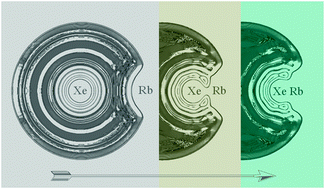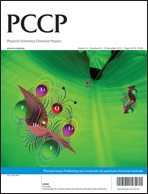Helium nanodroplets doped with xenon and rubidium atoms: a case study of van der Waals interactions between heliophilic and heliophobic dopants
Abstract
In this work we apply density-functional theory to simulate a double-dotation of He-clusters with Rb and Xe atoms. We investigate the influence of the He droplet environment on the weak van der Waals interaction between xenon and rubidium. The heliophilic Xe resides inside the droplet, while the heliophobic Rb stays on its surface. The effect of this spatial separation, the stability of the system and its properties are discussed in the context of future experiments.


 Please wait while we load your content...
Please wait while we load your content...